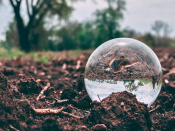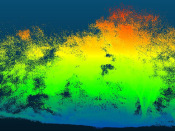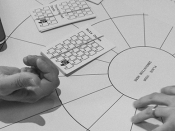Por Luís Pereira (Department of Materials Science and CENIMAT/I3N, NOVA School of Science and Technology, Lisbon, Portugal).
The presentation will focus on applying cellulose nanocrystals (CNCs) in new electro-optic devices that combine these CNCs with inorganic semiconductors in field effect transistors and photodetectors sensitive to the polarization of light, towards nature-inspired hybrid electronics and photonics. One of the objectives has been on the controlled formation of chiral self-assembled nanostructures with controlled and uniform pitch through evaporation-induced self-assembly (EISA) of CNCs in aqueous suspensions. The findings show necessary tip sonication energy input of at least 3 kJ gCNC-1 to promote phase separation after one week of standing. Transition from anisotropic to isotropic phase depends on the initial preparation of the CNCs.
Another goal has been on the ionic modification of the CNCs when already in the form of a chiral film. The electrochemical properties of these films and their successful integration into field-effect transistors without compromising self-assembly behavior. Infiltration of solid chiral CNC films with three distinct alkali ions (Li+, Na+ and K+) to yield films with improved electrochemical responses, when compared to pristine ones, while preserving their photonic character. Combining the photonic character of the CNC films with the light sensitivity of the a-IGZO, the devices can discriminate between LCPL and RCPL signals in the blue/UV region.
A final study shows the incorporation of C-CNC films, into amorphous silicon-based thin-film photodiodes, achieving a light sensor capable of discriminating photocurrents that are over 50% distinct between RCPL and LCPL.













